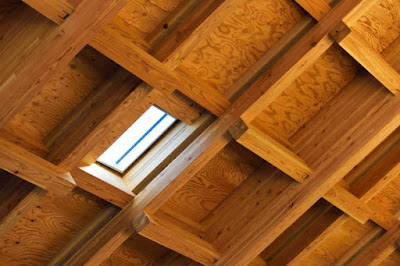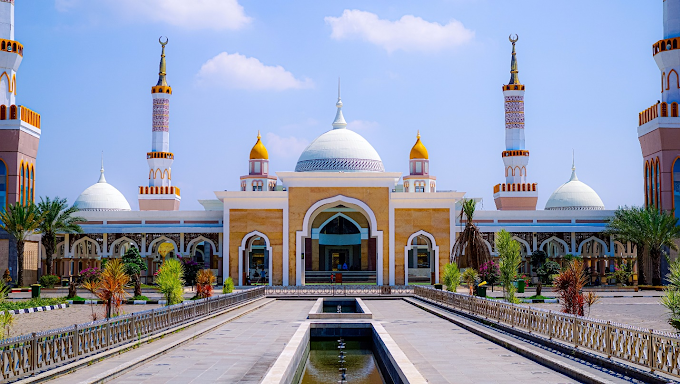Japanese Timber Architecture in the Modern Era Japan's National Stadium Sets the Stage for Timber Innovation
Japan's National Stadium stands as a
remarkable testament to the use of timber in contemporary construction. Timber,
once a staple of traditional Japanese architecture, is now gaining recognition
as a key component in achieving a carbon-neutral society and combating global
warming. In this article, we explore the timeless Japanese techniques employed
in sustainable timber architecture, as well as current endeavors and future
prospects.
Kiyomizu-dera: A Temple's Resilience
Across Centuries
Kiyomizu-dera Temple, an iconic symbol
of Japan's timber craftsmanship, has endured for over 1,200 years. Its current
main hall, dating back to 1633, has been meticulously reconstructed each time
it faced destruction by fire.
Kiyomizu-dera Temple
Remarkably, no nails were used in the
construction of Kiyomizu-dera Temple's pillars.
Enlarge photo
In addition to routine maintenance,
Japanese Timber Architecture Kiyomizu-dera Temple undergoes significant renovations every two decades for
its main hall stage and every 40 to 50 years for its roof. Notably, the main
hall's roof was recently re-thatched for the first time in half a century,
employing a traditional Japanese technique known as hiwadabuki, which has
earned UNESCO recognition as an Intangible Cultural Heritage.
Repairing Kiyomizu-dera Temple
Enlarge photo
The main hall's stage is supported by
pillars crafted from 400-year-old Japanese zelkova trees, renowned for their
exceptional durability, which is roughly twice the age of the trees themselves.
Preparing construction materials for the next 400 years involves sustainable
tree planting and cultivation within Kiyomizu-dera Temple's own forests in
Kyoto.
Harnessing Timber's Potential in Tokyo's Olympic Venues
Approximately 40% of Japan's forested
areas consist of artificially cultivated forests, established in the 1950s,
Japanese Timber Architecture which are now mature and ready for use. Allowing these trees to stand without
intervention could lead to decay and potential disasters like landslides.
Image of a forest
The time has come to harvest mature
trees for various large-scale construction projects while also facilitating
reforestation by planting new trees. During their growth stages, young forests
effectively absorb substantial amounts of CO2, contributing significantly to
global warming prevention.
The Tokyo Olympic and Paralympic Games
in the summer of 2021 showcased a notable commitment to timber usage in their
venues, underscoring the urgency of environmental action.
Japan's National Stadium
Designed by world-renowned architect
Kuma Kengo, Japan's National Stadium features timber sourced from diverse
regions of Japan for its striking façade.
Enlarge photoAriake Gymnastics
CentreEnlarge photoInterior of the Ariake Gymnastics CentreEnlarge photo
The Ariake Gymnastics Centre also
prominently features timber, notably boasting a 90-meter-long timber arch
supporting its roof, among the largest in the world.
The Challenge of Crafting Earthquake-Resistant Timber Skyscrapers
In the pursuit of a carbon-neutral
society, a pioneering construction company is embarking on the ambitious goal
of constructing an all-timber high-rise building. Japanese Timber Architecture This endeavor involves
utilizing timber for the entire structure, including columns, beams, and
floors, in a bid to minimize CO2 emissions and reduce environmental impact.
An all-timber high-rise fire-resistant
buildingEnlarge photoBuilders working on the constructionEnlarge photo
Yet, building an all-timber high-rise
structure in earthquake-prone Japan presents numerous challenges. Employing
seismic isolation systems and innovative timber units capable of withstanding
earthquakes, the construction company places these units at critical joints
between columns and girders, where seismic forces are most potent. The result
is a timber building designed to provide long-term safety and peace of mind.
Future Timber Architecture: Eco-Friendly and People-Centric
A venerable forestry company with over
300 years of history has embarked on a visionary endeavor: the construction of
a 70-story, 350-meter-high timber skyscraper. This project aims to maximize
timber's unique properties to create an environmentally friendly and
aesthetically pleasing structure for all.
Computer-generated image of a timber
skyscraper (1)Enlarge photoComputer-generated image of a timber skyscraper
(2)Enlarge photo
Building skyscrapers using timber
demands a significant quantity of this resource, prompting increased
reforestation efforts to meet future demand for timber-based constructions.
Researchers are diligently working on enhancing forestry cultivation efficiency
by utilizing genetic information from trees to select optimal seedlings.
Researcher conducting genome research
Enlarge photoResearcher selecting
seedlingsEnlarge photo



.jpg)



